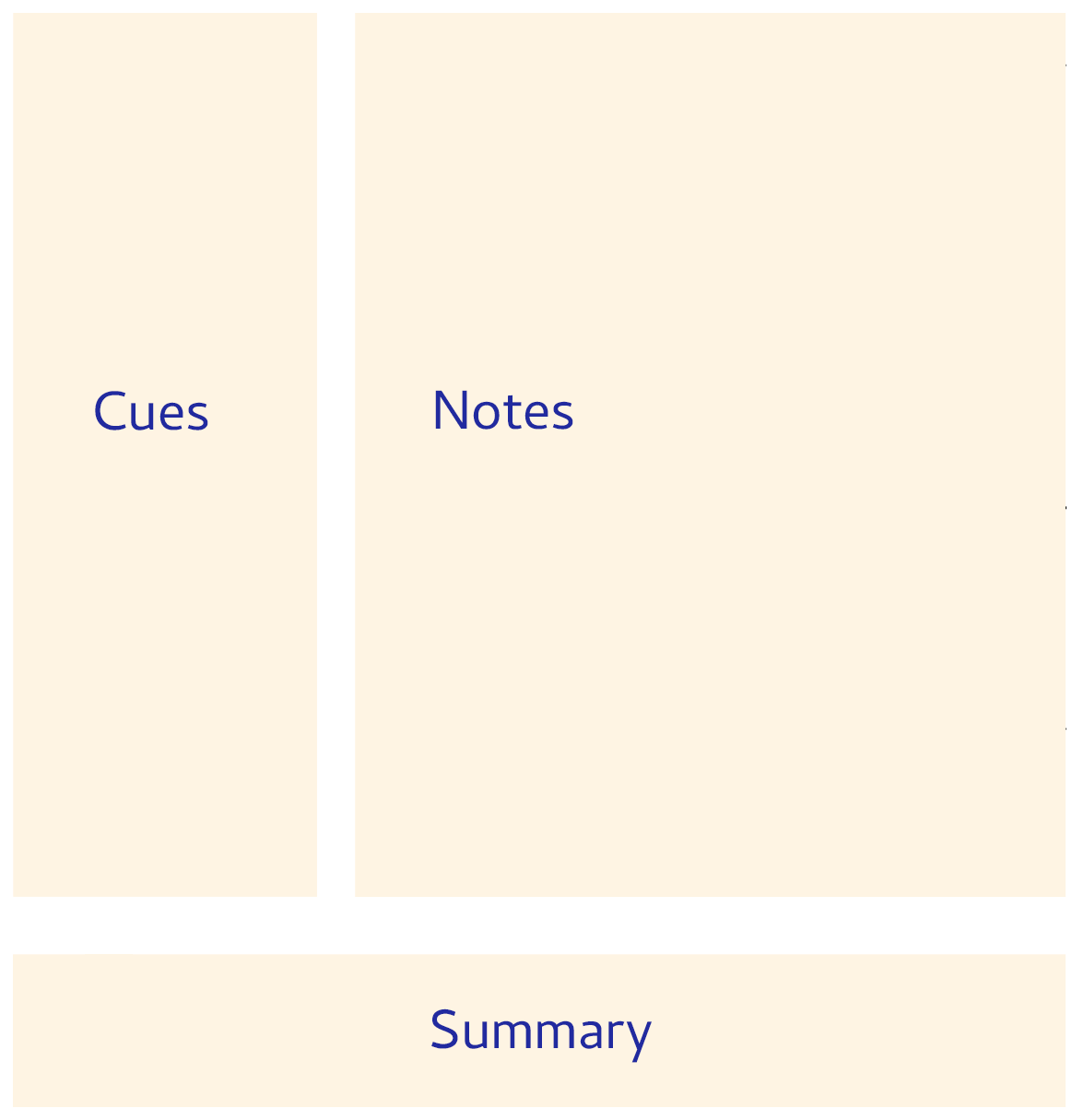
What is the Cornell note-taking method?
The Cornell note-taking system is a structured method to enhance a student's ability to organize notes and review information. It was developed in the 1950s by Walter Pauk, a professor at Cornell University. He introduced the method in his book How to Study in College (Pauk & Owens, 2013), first published in 1962 which has been through eleven editions. The method gained widespread popularity and is used by students at various levels worldwide. Its effectiveness in promoting active learning and improved retention has led to its adoption in many study skills programs and academic success courses.
How to use the Cornell notes method
Start by dividing your notepaper into three sections:
- a narrow left column for cues, (about ⅓ width)
- a wider right column for notes, (about ⅔ width)
- and a bottom section for summaries. (enough for 5ish lines of text)
Focus on capturing key ideas, concepts, and supporting details in the right column during lectures. Use abbreviations and shorthand to keep pace with the lecture to ensure you capture the most important information.
Review your notes as soon as possible after class and use the left column to write cues and questions related to the information on the right.
These cues will help you recall the main points and serve as future study prompts.
Write a concise summary of the page's content in the bottom section; try to synthesize the main ideas.

Quick Reference
- Put the date, course name, and topic at the top of the page. Update at the end if you do not know the topics in advance.
- Split the page into two columns. Use about 2/3s of the space for the right-hand column, and leave several inches below both columns at the bottom.
- Take notes in the right column capturing as much detail as you are able.
- Go over your notes and write “cues” into the left-hand column: keywords, phrases, and questions related to the text to their right.
- Summarize the page’s content at the bottom in your own words.
See The Cornell Note Taking System at Cornell’s own website for their own guide on note-taking.
Why is this effective?
Actively engaging with your notes—by creating cues and summaries—reinforces your understanding and retention of the material. Review your notes by covering the right column and using the cues on the left for self-testing which is one of the most effective methods for improving recall.
- Summarizing the content helps you get to a deeper level of processing, which helps memory retention and recall.
- Your notes are more organized by having a summary, topic, and keywords.
- You can practice active recall by covering the right hand side and asking yourselves questions from your left hand column.
- The notes are already in a format suitable for using directly for self-testing or for more easily turning them into physical or digital flash cards.
Free Notes Template
Subscribe to the LearnedMemory newsletter to receive our free, printable Cornell notes template.
References
The Cornell Note Taking System – Learning Strategies Center. (n.d.). https://lsc.cornell.edu/how-to-study/taking-notes/cornell-note-taking-system/
Pauk, W., & Owens, R. J. (2013). How to Study in College. Cengage Learning.
Wikipedia contributors. (2024, September 29). Cornell Notes. Wikipedia. https://en.wikipedia.org/wiki/Cornell_Notes